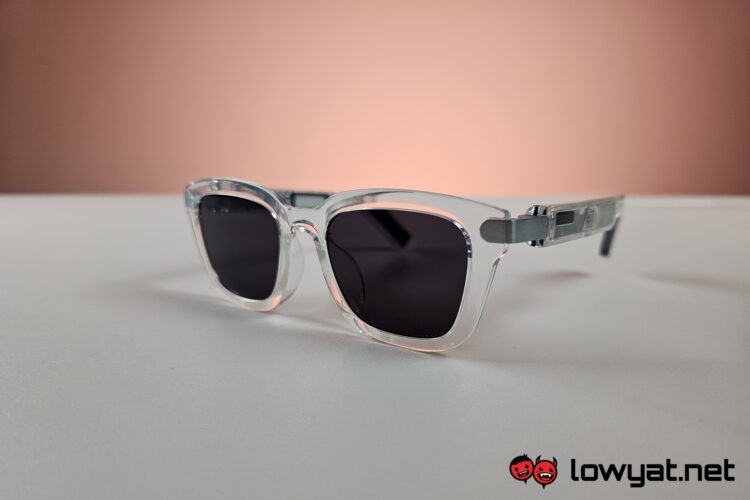The idea of blending headphones with glasses is, by this point, not that new anymore, as there have been plenty of such things being announced over the years. This is a far cry from four years ago, when I first reviewed the Huawei X Gentle Monster Eyewear II, when it was one of the few examples of such things. Which brings me to the subject of today’s review, the JBL Soundgear Frames.
For the most part, what I’ve said for that review applies to this iteration of audio eyewear as well. Of course, there are some key differences here and there, and we’ll go through the list of them in due course. But just like the Huawei and Gentle Monster collab, the JBL Soundgear Frames has similar issues when it comes to practicality.
What Am I Looking At?

Considering the way it is constructed, the JBL Soundgear Frames makes for an interesting fashion accessory piece, and perhaps a good conversation starter if the people around you notice it. This is simply due to its transparent plastic construction which allows for the electronics in both arms to be easily visible. That being said, I had it with me for an outing with friends, and we managed to end the day without it ever being brought up. And this is despite me not being the kind to usually have shades with me.
On that note, while the JBL Soundgear Frames comes with tinted glasses by default, the brand says that you can take it to an optometrist and have it replaced with prescription optics. Whether or not you should is something we’ll discuss a little later in this review.
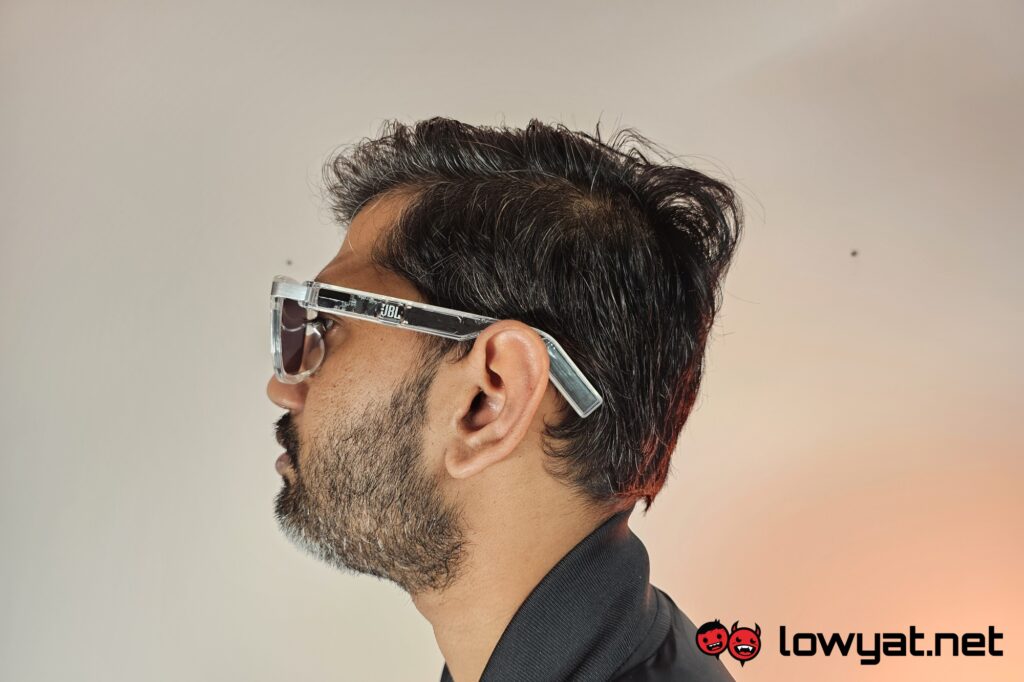
Unfortunately, despite the way it looks, the JBL Soundgear Frames does not run with the principles of bone conduction. Which means that, like other examples of audio eyewear, it has the expected vents that direct the sounds to your ears, and it’s made to quite cleverly blend in with the clear plastic.
Finally, you get gesture controls like you would on your average headphones or TWS buds. These are used on the JBL branding on each arm and no the black bits that look like sensor strips. With thing being where it is, getting used to them will take some time.
What’s Good About It?
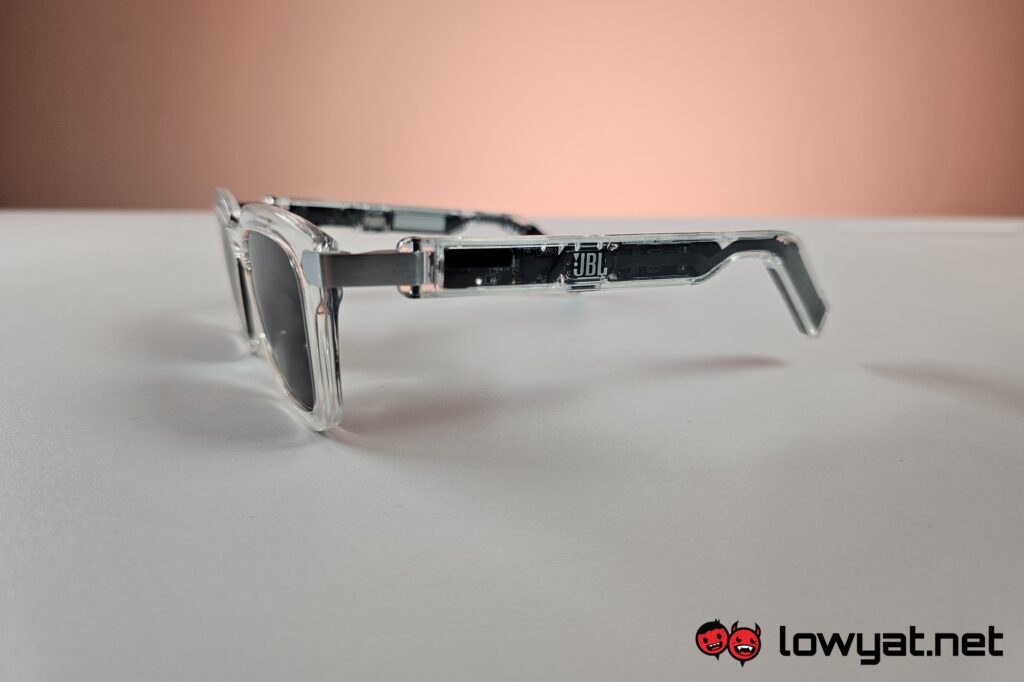
In a sense, you can probably consider headphone glasses an extension of the resurging trend of open ear headphones in the wireless age. With that in mind, you have most of the benefits that come with this design archetype. Which is to say that you get good situational awareness as your ears are not covered.
As I’ve mentioned when I reviewd the Huawei X Gentle Monster Eyewear II, audio eyewear are as much a fashion accessory as it is a personal audio piece of tech. And it’s much the same story with the JBL Soundgear Frames. On that front, your mileage may vary as to whether or not it’s a good one that fits your style.
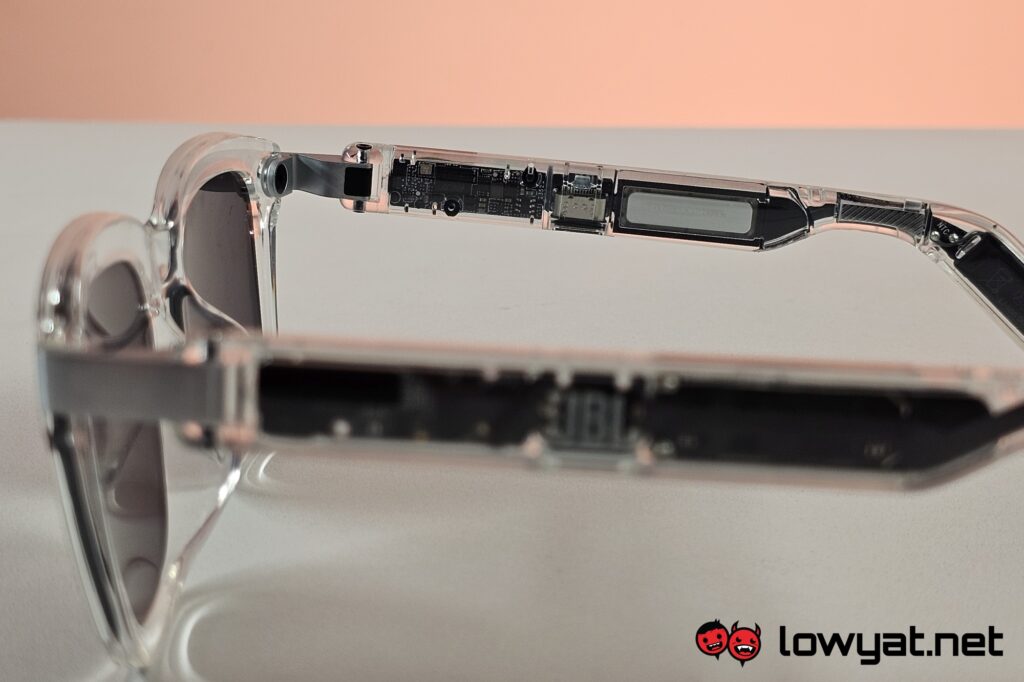
In terms of endurance, the JBL Soundgear Frames have a claimed battery life of eight hours. Which isn’t much, but it could probably last you the weekend if you’re an especially outdoorsy person. Charging times are quick as well, with 10 minutes giving you two hours of listening time. The thing also comes with an IP54 rating, so it can resist the elements somewhat if that’s where your adventures take you.
Finally, there’s the sound quality itself. During the testing of the JBL Soundgear Frames, I’ve been listening to the instrumental version of FREEDOM by Takanori Nishikawa ad nauseam, and I can report that soundstaging and sound separation is surprisingly good for what it is. The same can be said for the highs and some of the mids, where a surprising amount of detail is sent to your ears rather than lost to the aether. What isn’t quite so is the punch, or lack thereof, on the lower end of the sound spectrum, which is a problem inherent in this headphone design.
What’s The Catch?
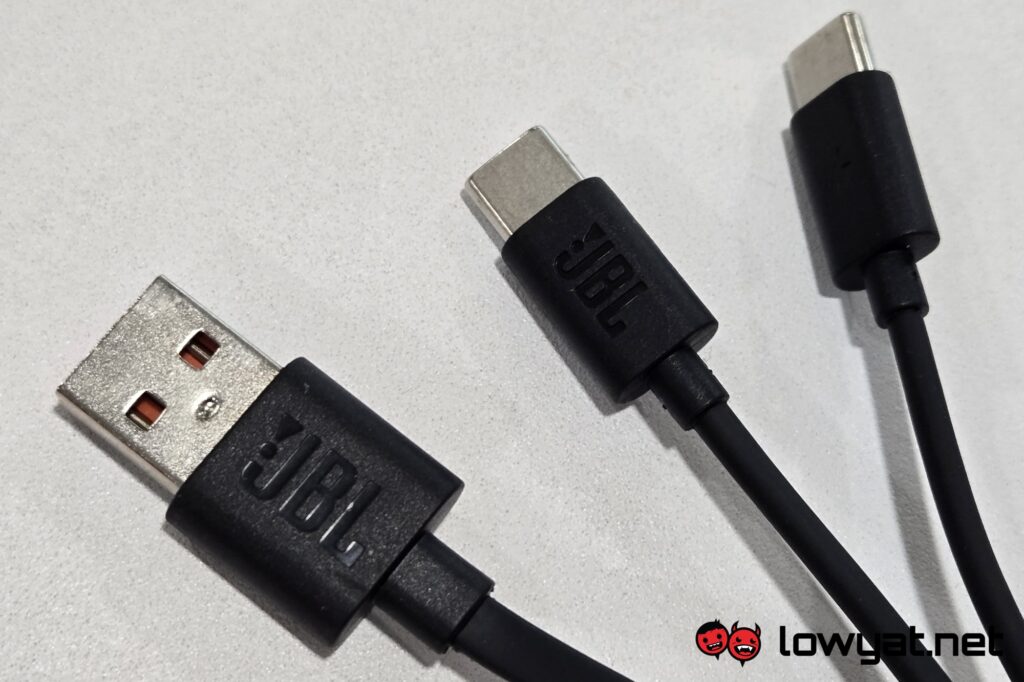
Unfortunately, the JBL Soundgear Frames have a number of issues that hold it back. To start, while the two temple arms work together to give you stereo music, they have to be charged independently. You do get a two-way USB-C splitter in the box, but if you lose that, you’ll have to use two cables for the process. The saving grace here is, as mentioned above, it’s not a long one.
Then there’s the sound leakage. While the JBL Soundgear Frames provide good stereo music, it doesn’t just provide it to you. While you have it at a comfortable level for yourself, everyone nearby can probably hear the exact same, at maybe three volume levels lower. It’s unclear whether this is due to poor sound beamforming or something else that’s the cause. At any rate, I would definitely recommend only wearing it in places that are noisy, or not crowded. Better yet, only have it on when you’re on the move, like jogging or cycling, especially if you’re the self-conscious type.
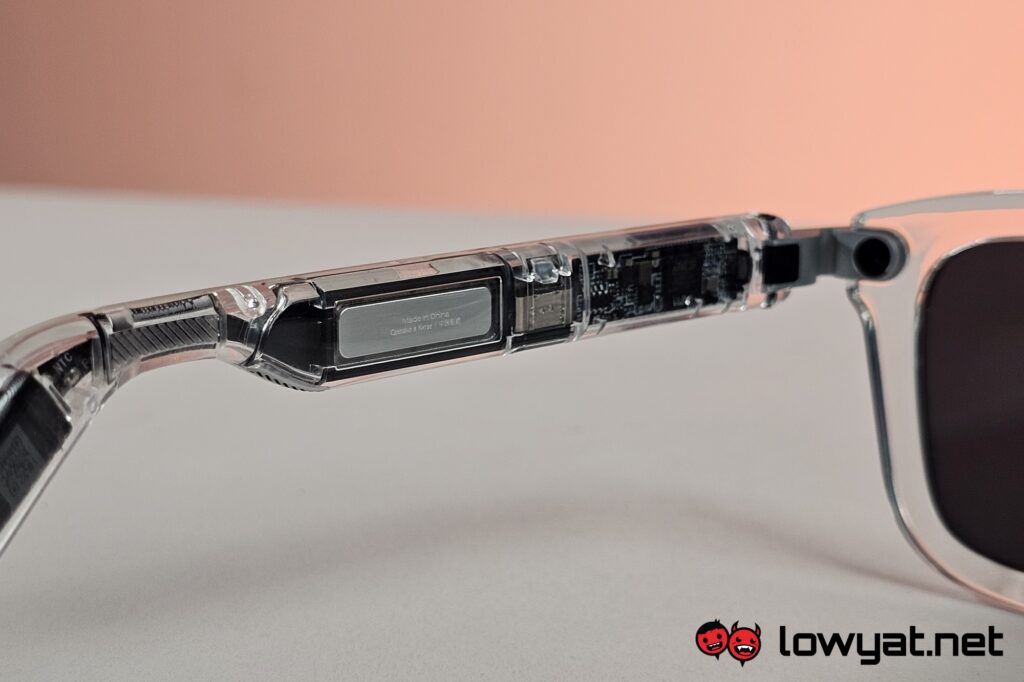
Where we get into nitpick territory is probably the way the JBL Soundgear Frames turn on or off. By default, when the temples are folded in, they are turned off. When you flip them out, they turn on. So far, so good. But one are where it’s found wanting is the lack of an auto pause when you remove it without folding the temples in. This is usually not a problem, as glasses are normally something that you either have on or don’t, with no real reason to frequently flip between the two.
Finally, there’s the matter of fit. Your mileage may vary on this, so it’s probably best to give it a try on your face before committing to getting one. As mentioned earlier, you can take the JBL Soundgear Frames to an optometrist to fit in prescription optics, and if the fit isn’t quite right, you can probably get that adjusted there as well. For me, the shades are just a tad too tight, though it’s a sentiment from that should be taken with a pinch of salt since I don’t usually wear glasses.
Should I Buy It?
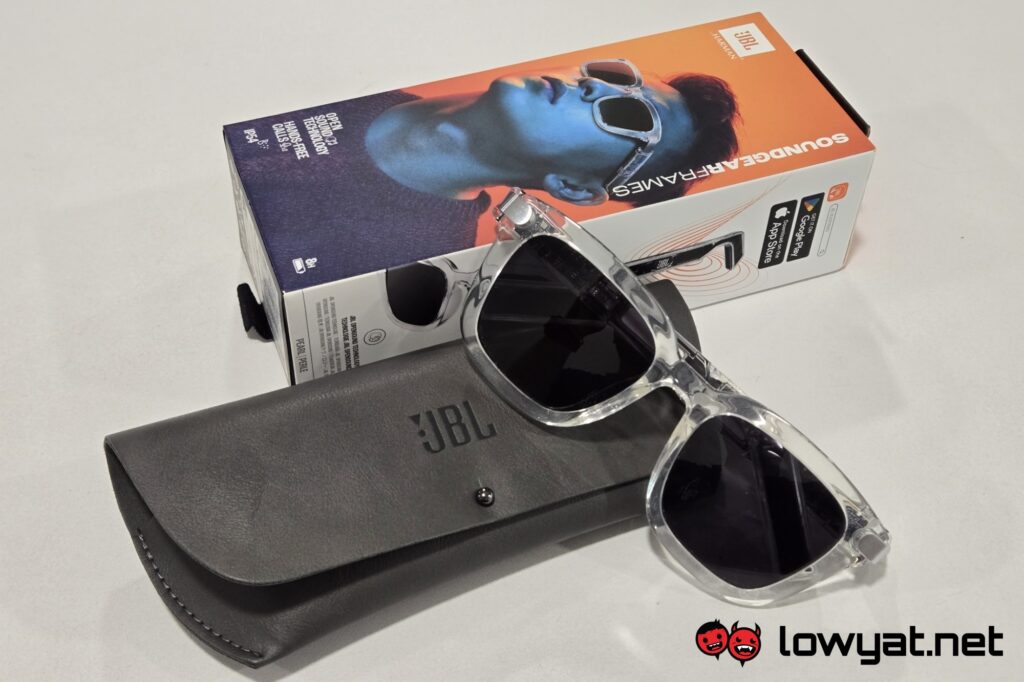
Priced at RM999, or RM888 as the perpetual discount on the brand’s online store seems to show, the JBL Soundgear Frames has a very specific use case scenario. With those two things in mind, it’s difficult to recommend it to someone who isn’t outside and on the move often. Doubly so if you’re not a shades kind of person.
But if you are, and are willing to splurge on fashion statements, the JBL Soundgear Frame certainly can be something to add to your collection. Otherwise, if you’re strictly for function over form, you can probably get a pair of sunglasses and a separate form of personal audio product for about the same kind of money, without sharing your music tastes with strangers.
Photography by Sam Wei Han.
Follow us on Instagram, Facebook, Twitter or Telegram for more updates and breaking news.


